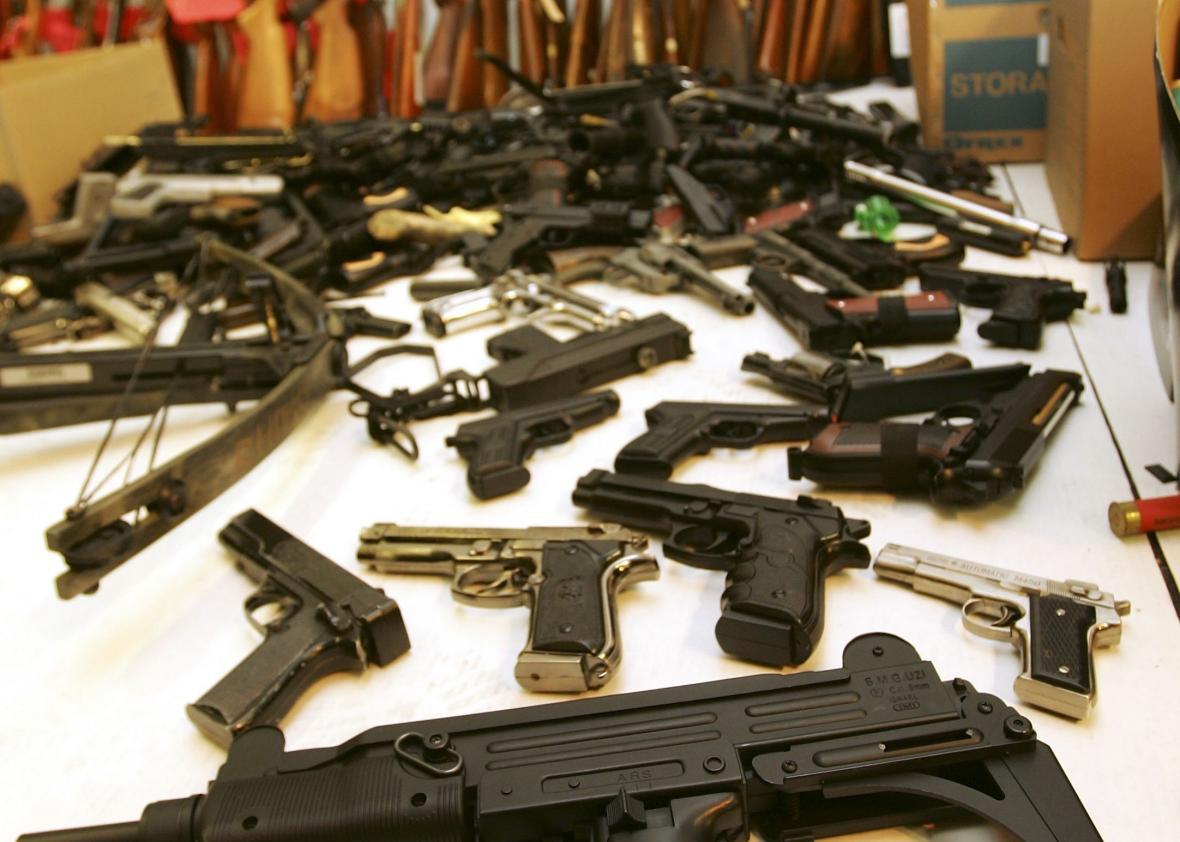Since 1996, convicted domestic abusers have been barred from purchasing guns. Even a misdemeanor will land one of these perpetrators in the FBI-managed database of people who can’t buy a firearm, thanks to the federal Domestic Violence Offender Gun Ban.
The policy was spurred by staggering statistics that even the gun lobby couldn’t refute: Ninety-three percent of women killed by men know their murderer, the majority of whom are their intimate partners. Guns are the preferred weapon of domestic abusers who kill their partners, and domestic assaults are 12 times more likely to be fatal if a gun is involved. Even the simple presence of a gun in a home makes domestic violence five times more likely to lead to murder.
But the federal law leaves two gaping loopholes, explored at length in a recent article from The Trace. Even though the victims of intimate-partner homicide are usually dating their partners, not married to them, the federal definition of domestic abuse requires that the couple be currently or formerly married, cohabitating, or the parents of shared children. This “boyfriend loophole” means that convicted domestic abusers who aren’t married to their targets can still purchase guns if they’re otherwise eligible.
The federal gun ban for domestic abusers also leaves a perpetrator’s existing gun collection untouched, which renders the ban ineffective against any abuser who already owns a firearm. Some local and state governments have passed laws that force convicted domestic abusers or subjects of domestic violence restraining orders to turn in their guns; these have been largely effective. The Trace cites a 2009 study that credited cities in these states with domestic gun murder rates 25 percent lower than cities in states without relinquishment laws.
But even in states and municipalities where it’s possible for judges to make abusers give up their guns, judges don’t often take advantage of the law. Everytown for Gun Safety found that when judges were aware that a domestic violence defendant had access to a gun, they only ordered the defendant to surrender it 13 percent of the time. The lapse is exacerbated by local police departments, who aren’t always aware that they’re responsible for enforcing surrender and seizing firearms if necessary. Some police departments, disinclined to take on the duty of storing the seized guns, have struck up partnerships with gun-friendly businesses, as the Dallas Police Department did with an area shooting range.
The current situation is bleak, but the U.S. is trending toward a better solution for the overlap between gun ownership and domestic violence. According to Americans for Responsible Solutions, 30 new state laws addressing this deadly intersection have cropped up since 2008. And a new federal bill introduced in July, the Zero Tolerance for Domestic Abusers Act, would extend the federal gun ban to convicted stalkers and abusers of current or former intimate partners of any sort, closing the boyfriend loophole. But an identical bill failed in 2013, and the current Congress is no friendlier to gun laws now than it was then. The proposed act may be a long shot, but for victims of domestic violence, the delay could be a matter of life and death.
